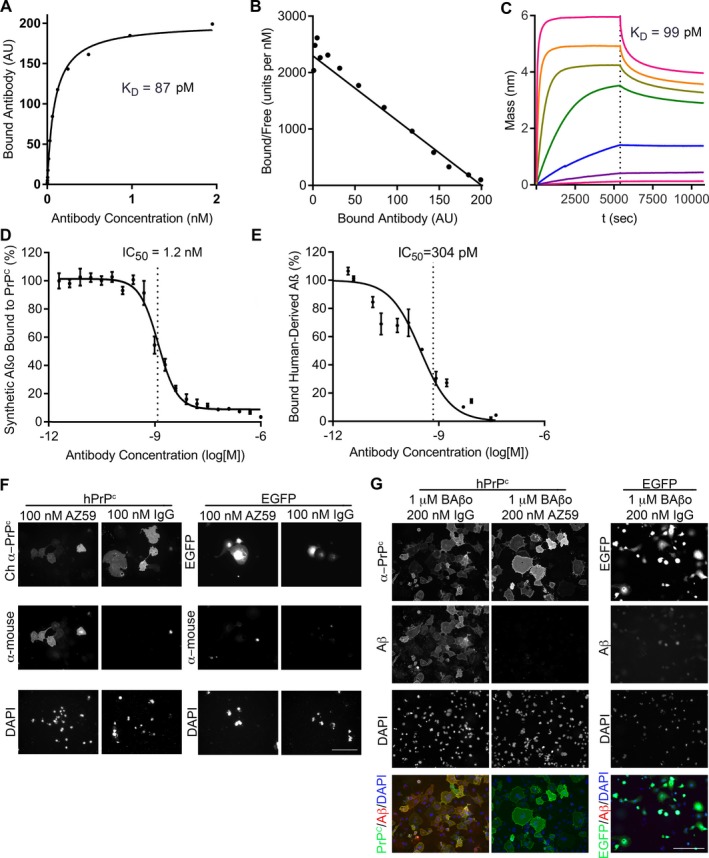Figure 1.

AZ59 binds to PrPC with high affinity and specificity and inhibits Aβo binding in vitro. (A) The binding of AZ59 to a 384‐well plate coated with PrPC(23‐230). Data are mean ± SEM, n = 3 replicates per sample. (B) Scatchard analysis of the data in (A). (C) Biolayer interferometric association (0–5400 sec) and dissociation (5401–10,800 sec) traces of AZ59 at concentrations of 0.024 nmol/L, 0.98 nmol/L, 0.39 nmol/L, 1.56 nmol/L, 6.25 nmol/L, 25 nmol/L, 100 nmol/L with PrPC(23‐230)‐coated sensor, indicating a dissociation constant of 99 pmol/L. (D) Prion‐Linked ImmunoSorbent Assay (PLISA) measurement of AZ59 inhibition of Aβo/PrPC(23‐230) interaction, indicating an IC50 of 1.2 nmol/L. Data are mean ± SEM, n = 3 replicates per sample. (E) PLISA measurement of AZ59 inhibition of human brain‐derived Aβo binding to PrPC, indicating an IC50 of 0.3 nmol/L. Data are mean ± SEM, n = 3 replicates per sample. (F) AZ59 binds to Cos‐7 cells expressing hPrPc but not EGFP. No binding of mouse IgG control was detected in either scenario. Scale bars = 200 μm. (G) AZ59 (100 nmol/L) completely blocks binding of biotin‐Aßo (1 μmol/L monomer equivalent) to Cos‐7 cells expressing myc‐tagged hPrPc. Scale bars = 200 μm.
